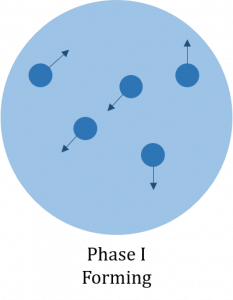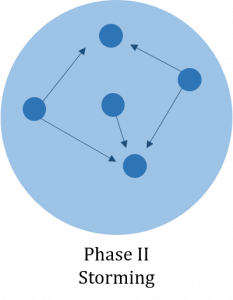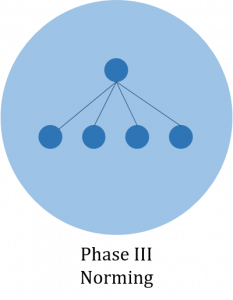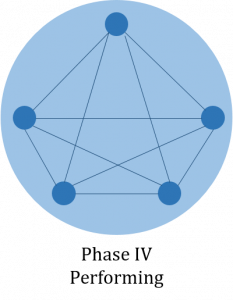5.1.3 Chapter structure
Course subject(s)
Module 5. Engineers as Team Leaders
The structure of this chapter aligns with the stages that are specified in the classic model of group development from Tuckman: forming, storming, norming, and performing (Tuckman, 1965). A fifth stage – adjourning – was later added to the model, but is about the exit stage of a team and is of less relevance for this course. Tuckman’s model is widely recognized in organizational literature and has proved useful in practice. It describes how people work together, and provides a common language to discuss and explore team dynamics.
Some scholars state that teams go through the stages one by one. However, the most common idea is that teams:
- “travel” back and forth between stages,
- can go through two stages at the same time,
- skip stages, or
- fall back into a previous stage.
In this course, we use the model loosely as a “skeleton” to explain work team dynamics in a structured way. We would like to stress that we do not regard the model as a norm of how teams should follow certain stages in order to be successful. Choices about relating concepts to stages are based on clarity and relevance for this particular course and can deviate from the choices other scholars made.
Competency. After following this chapter, you will be able to describe, recognize, and manage the most important dynamics that occur within work teams with regards to formation, conflict, group norms, and performance.




Source: Forsyth, D. R. (2009). Group dynamics. Cengage Learning.

Influencing Stakeholders: Dealing with Power and Dynamics in Teams and Networks by TU Delft OpenCourseWare is licensed under a Creative Commons Attribution-NonCommercial-ShareAlike 4.0 International License.
Based on a work at https://online-learning.tudelft.nl/courses/influencing-stakeholders-dealing-with-power-and-dynamics-in-teams-and-networks/.



